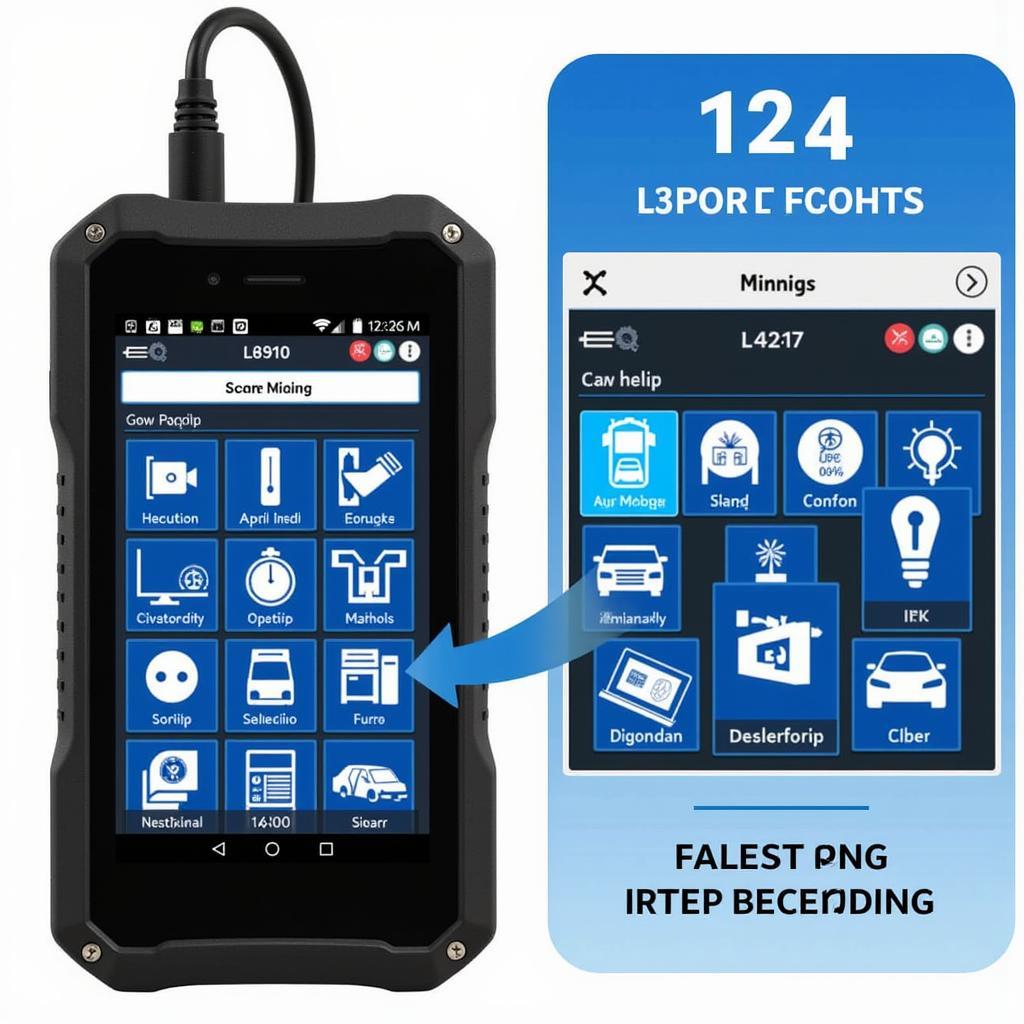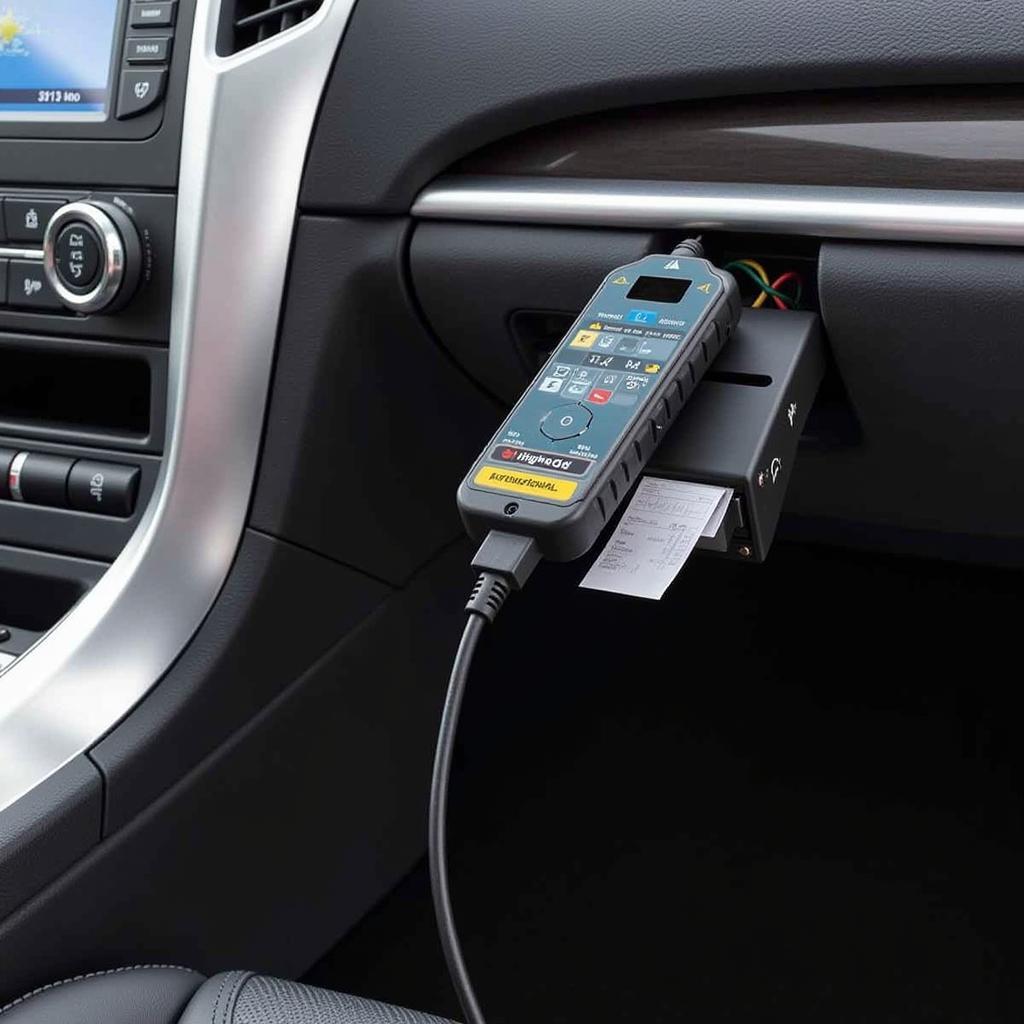A Performance Tool Scan Tool is an essential piece of equipment for any car owner, mechanic, or automotive enthusiast. Whether you’re troubleshooting a check engine light, analyzing engine performance, or just want to stay on top of your vehicle’s health, a quality scan tool can provide the information you need.
What is a Performance Tool Scan Tool?
Simply put, a performance tool scan tool is a device that connects to your car’s onboard computer – also known as the Engine Control Unit (ECU) – to retrieve data about various systems and components. This data is then translated into readable codes and information that can help you identify and even diagnose issues.
Gone are the days of relying solely on a mechanic’s intuition and experience. With a performance tool scan tool, you can:
- Read and clear diagnostic trouble codes (DTCs): These codes are like your car’s way of telling you something is wrong.
- View live data streams: Get real-time information about engine RPM, coolant temperature, oxygen sensor readings, and more.
- Perform actuator tests: These tests can help determine if specific components like solenoids and actuators are functioning correctly.
- Conduct system resets: Resetting systems like the TPMS (Tire Pressure Monitoring System) or performing a DPF (Diesel Particulate Filter) regeneration can often be done with a scan tool.
Choosing the Right Performance Tool Scan Tool
With a plethora of scan tools available on the market, selecting the right one can feel overwhelming. Here are key factors to consider:
1. Vehicle Compatibility:
- OBD-II & CAN: Most modern vehicles (1996 and newer in the US) use the OBD-II standard with CAN (Controller Area Network) communication protocol. Ensure the scan tool you choose is compatible.
- Vehicle Specific Features: Some scan tools offer enhanced functionality for specific car makes and models, allowing access to manufacturer-specific codes and bi-directional controls.
2. Functionality:
- Basic Code Readers: These entry-level options read and clear basic DTCs.
- Mid-Range Scan Tools: Offer live data streaming, actuator tests, and some system resets.
- High-End Professional Scan Tools: Provide advanced functionality like bi-directional control, coding, programming, and access to multiple vehicle systems.
3. Budget:
- Basic code readers can cost as low as $20.
- Mid-range scan tools typically range from $100 to $500.
- Professional-grade scan tools can cost well over $1000.
4. User Friendliness:
- Intuitive Interface: Look for a scan tool with a user-friendly interface and easy-to-navigate menus.
- Display: A clear, easy-to-read display is crucial, especially when viewing live data.
- Software Updates: Ensure the scan tool manufacturer provides regular software updates to stay compatible with the latest vehicle models and technology.
Benefits of Using a Performance Tool Scan Tool
Investing in a performance tool scan tool, whether you’re a DIYer or a professional mechanic, comes with a range of benefits:
- Save Money on Repairs: By identifying problems early on, you can often address minor issues before they escalate into costly repairs.
- Avoid Unnecessary Trips to the Mechanic: Diagnose basic problems yourself and determine if a mechanic visit is truly necessary.
- Gain a Deeper Understanding of Your Vehicle: Monitor critical systems, track performance data, and gain valuable insights into your car’s overall health.
- Increased Resale Value: Regularly using a scan tool can help you maintain your vehicle in optimal condition, potentially increasing its resale value.
Performance Tool Scan Tool in Action: A Real-World Example
Let’s say your check engine light illuminates. Instead of panicking or rushing to a mechanic, you can use your performance tool diagnostic scan tool can obdii model w2977 to retrieve the diagnostic trouble code (DTC). You discover the code is P0420, which indicates a potential issue with the catalytic converter.
Armed with this information, you can then research the code, check your owner’s manual, or consult online resources for possible causes and solutions. You might discover that a faulty oxygen sensor can trigger this code.
By using your scan tool’s live data feature to monitor the oxygen sensor readings, you can further investigate and potentially pinpoint the problem, saving yourself a potentially expensive trip to the mechanic.
Tips for Using a Performance Tool Scan Tool
- Always consult your vehicle’s repair manual: It provides valuable information specific to your car model.
- Start with the basics: Begin by reading and clearing any DTCs before diving into live data or advanced functions.
- Don’t rush the process: Take your time, research codes thoroughly, and avoid making hasty decisions based on a single reading.
- Update your scan tool software regularly: This ensures compatibility with the latest vehicle models and technologies.
Conclusion
A performance tool scan tool is an invaluable asset for anyone who wants to take control of their car maintenance and repairs. From basic code reading to advanced diagnostics, a scan tool empowers you with knowledge about your vehicle’s health, potentially saving you time and money in the long run.
If you need assistance choosing the right performance tool scan tool for your needs, ScanToolUS offers a wide selection of overclock scan tool, ultra performance scan tool, and volvo vst scan tool options. Contact us at +1 (641) 206-8880 or visit our office at 1615 S Laramie Ave, Cicero, IL 60804, USA.



